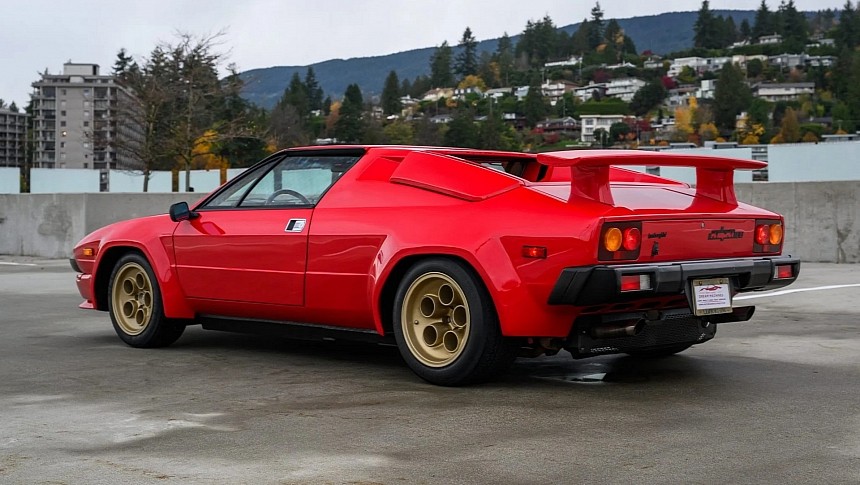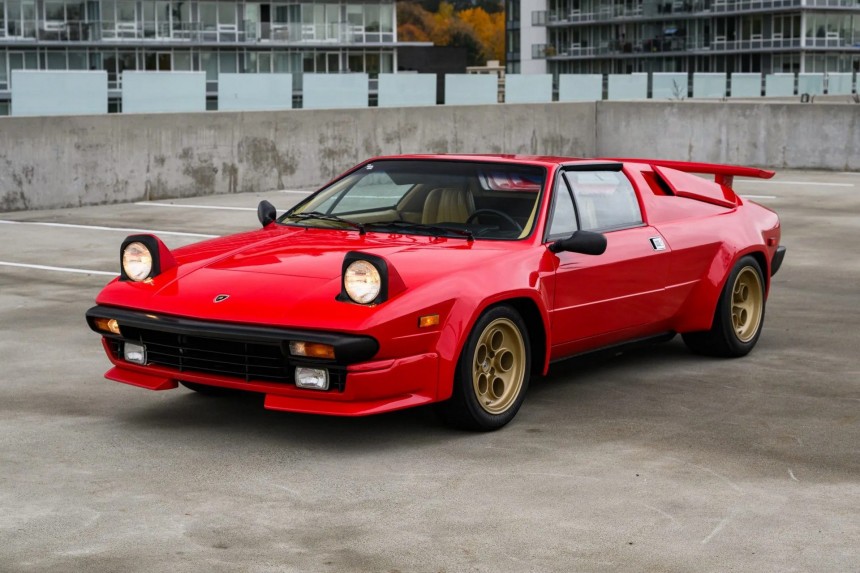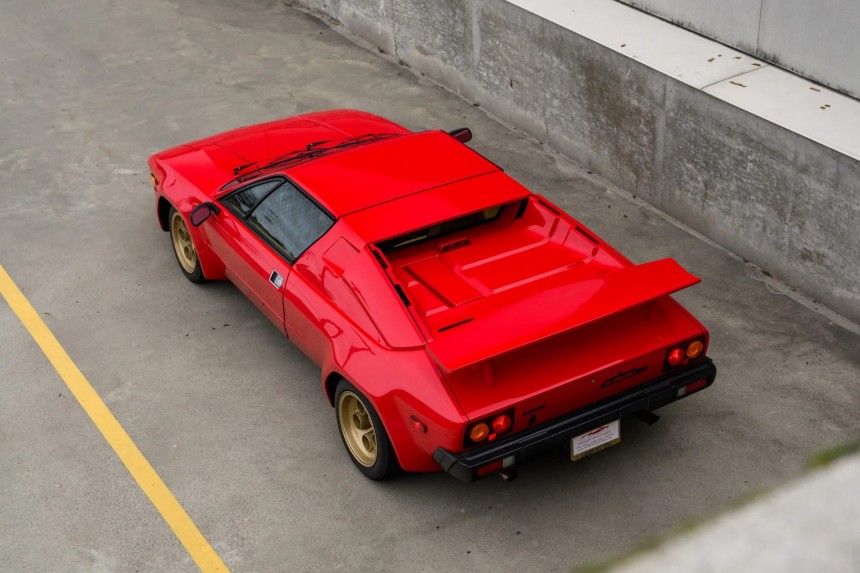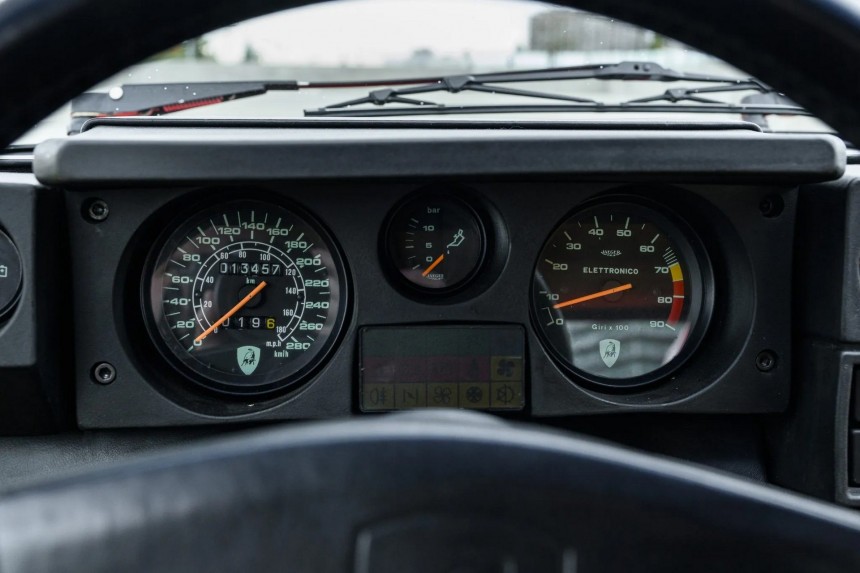V8 is the powertrain architecture most often associated with Detroit products – mainly because the archetypal engine has been the staple of American motoring for over a century. But other countries rely on eight cylinders arranged in two banks to power some iconic machines. Among those legends, one stands alone, as the V8 represented a massive downsizing of its internal combustion legacy. Lamborghini is famous for its V12s and V10s, but the Italian bull also made great use of the lesser-pistoned platform.
Ferruccio Lamborghini dreamt about cars that could be enjoyed any day of the week, anywhere from the twisting mountain roads in northern Italy to the French Riviera to the racetrack. He wanted his cars to be driven not just as a show of status but for the pleasure of it. However, a V12 wasn’t the optimal solution for such ambitions, and the Italian took a step to the side and looked at the matter from outside the box.
The answer was the Urraco, the first V8-engined Lamborghini from Sant’Agata Bolognese. Introduced in 1970, the entry-level Lambo was superseded by the Silhouette (1976) and eventually the Jalpa in 1981. The latter stayed in the Italian carmaker’s portfolio until 1988. When it left the scene, it put a three-decade halt to Lamborghini's V8 aspirations. It was the Urus, in 2018, that brought back the eight-cylinder corrida under the hood of a Raging Bull.
The Jalpa (pronounced Yalpa, despite being the name of a Spanish breed of fighting bulls, the Jalpa Kandachia) was a baby version of the Countach, toned down in design, specs, and performance. It was meant to be enjoyed regardless of how long the drive was. Only 420 units were assembled (by hand) in seven years – roughly translating into one Jalpa per week.
Codenamed P350 after its engine size, the less-expensive (in 1988, a new example was priced at $66,500.00 by the manufacturer) two-seater, targa-top Lamborghini used a rear transversal 3.5-liter plant to hit 146 mph (234 kph) in fifth gear. Officially, the quad-cam all-alloy V8 was rated at 250 hp and 232 lb-ft (255 PS, 314 Nm), but several first-hand accounts claim the car felt much quicker than that.
Although the more common production number puts the Jalpa at 410 units, the official Lamborghini records say differently – and around 100 of them made it across the Atlantic. One of the immediately frowned upon features were its wheels, and for good reason: the resemblance to a most American V8 icon is uncanny. The C4 Chevrolet Corvette had a nearly identical design for the wheels, and the Jalpa fell on the wrong side of motoring.
Toward the end of its career, a different rim model would be available for the Jalpa – the so-called ‘Bravo’ wheels that are a very in-your-face nod to the Countach. The old phone dial styling is seen in the example featured in this story, a late model assembled in November 1987 and sold new in October 1988 to a discerning customer from Mississippi.
Granted, the man had to cough up some seven grand over the MSRP I mentioned earlier, thanks to a gas-guzzler tax of $1,850, a dealer prep fee of another $500, and a destination charge of $1,000. The difference to the final price of $75,345 is covered by a $3,500 market adjustment and the cherry-on-top AM/FM Stereo Cassette. The entertainment system alone cost $1,995; the purchasing power equivalent today is $5,178 - and some of us think that today’s cars asking monthly subscriptions for creature comforts is daylight robbery...
The original buyer kept the Jalpa in his possession until 2020 and didn’t abuse it. He didn’t even enjoy it much: by 2004, he had put 12,880 kilometers on the odometer (yes, the car was sold in the States, but only the speedo had a dual-unit reading). That is 8,005 miles. Fast-forward 15 years, and the same Jalpa – one of the last off the line – reported only 13,925 km (8,654 miles).
It was sold the following year without adding a single inch to that value. Curiously, the hand-written maintenance notes state the above mileage (check the gallery), but the odometer reads some 500 km under that - see it in the second video attached, as well as in this snap below.
The red-over-champagne targa Lambo changed hands for $135,000 three years ago – quite a bargain, according to those in the know, given its rarity, low mileage, single-ownership history, and overall condition. And now, the same car met its third owner for a somewhat surprising $111,000. Some of those involved in the bidding war cried, “Steal!” when the auction ended. In just 19 minutes, Between 11:54 PM and 12:15 AM,
the price went up from $75,389 to the winning value, with 33 bids placed in total.
One exciting feature of this rare Lambo that just changed hands is its factory-made rear wing (it was ordered separately, not with the car). It came in white paint but was never installed on the vehicle. Not many examples have the aerodynamic element, making this particular unit all the more special. With the super-rare magnesium Bravo wheels (also original to the car and costly), this hand-built Jalpa certainly deserves a seat at the high table of iconic Raging Bulls.
The answer was the Urraco, the first V8-engined Lamborghini from Sant’Agata Bolognese. Introduced in 1970, the entry-level Lambo was superseded by the Silhouette (1976) and eventually the Jalpa in 1981. The latter stayed in the Italian carmaker’s portfolio until 1988. When it left the scene, it put a three-decade halt to Lamborghini's V8 aspirations. It was the Urus, in 2018, that brought back the eight-cylinder corrida under the hood of a Raging Bull.
The Jalpa (pronounced Yalpa, despite being the name of a Spanish breed of fighting bulls, the Jalpa Kandachia) was a baby version of the Countach, toned down in design, specs, and performance. It was meant to be enjoyed regardless of how long the drive was. Only 420 units were assembled (by hand) in seven years – roughly translating into one Jalpa per week.
Although the more common production number puts the Jalpa at 410 units, the official Lamborghini records say differently – and around 100 of them made it across the Atlantic. One of the immediately frowned upon features were its wheels, and for good reason: the resemblance to a most American V8 icon is uncanny. The C4 Chevrolet Corvette had a nearly identical design for the wheels, and the Jalpa fell on the wrong side of motoring.
Toward the end of its career, a different rim model would be available for the Jalpa – the so-called ‘Bravo’ wheels that are a very in-your-face nod to the Countach. The old phone dial styling is seen in the example featured in this story, a late model assembled in November 1987 and sold new in October 1988 to a discerning customer from Mississippi.
The original buyer kept the Jalpa in his possession until 2020 and didn’t abuse it. He didn’t even enjoy it much: by 2004, he had put 12,880 kilometers on the odometer (yes, the car was sold in the States, but only the speedo had a dual-unit reading). That is 8,005 miles. Fast-forward 15 years, and the same Jalpa – one of the last off the line – reported only 13,925 km (8,654 miles).
It was sold the following year without adding a single inch to that value. Curiously, the hand-written maintenance notes state the above mileage (check the gallery), but the odometer reads some 500 km under that - see it in the second video attached, as well as in this snap below.
the price went up from $75,389 to the winning value, with 33 bids placed in total.
One exciting feature of this rare Lambo that just changed hands is its factory-made rear wing (it was ordered separately, not with the car). It came in white paint but was never installed on the vehicle. Not many examples have the aerodynamic element, making this particular unit all the more special. With the super-rare magnesium Bravo wheels (also original to the car and costly), this hand-built Jalpa certainly deserves a seat at the high table of iconic Raging Bulls.






























